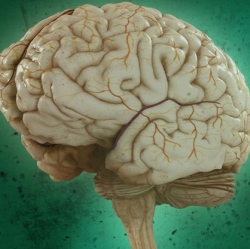
The nerve endings in your fingertips can perform complex neural computations that were thought to be carried out by the brain, according to new research published in the journal Nature Neuroscience. The processing of both touch and visual information involves computations that extract the geometrical features of objects we touch and see, such as the edge orientation.
Most of this processing takes place in the brain, which contains cells that are sensitive to the orientation of edges on the things we touch and see, and which pass this information onto cells in neighbouring regions, that encode other features. The brain has outsourced some aspects of visual processing, such as motion detection, to the retina, and the new research shows that something similar happens in the touch processing pathway. Delegating basic functions to the sense organs in this way could be an evolutionary mechanism that enables the brain to perform other, more sophisticated information processing tasks more efficiently.
Your fingertips are among the most sensitive parts of your body. They are densely packed with thousands of nerve endings, which produce complex patterns of nervous impulses that convey information about the size, shape and texture of objects, and your ability to identify objects by touch and manipulate them depends upon the continuous influx of this information
